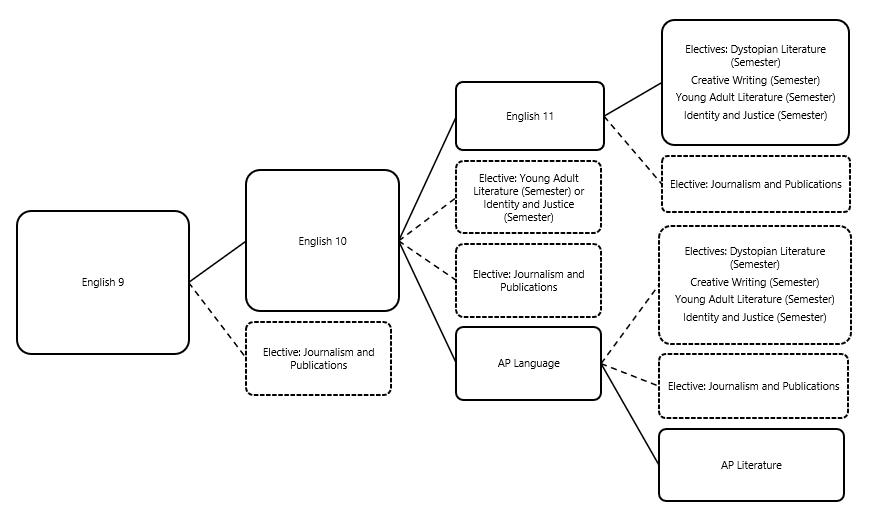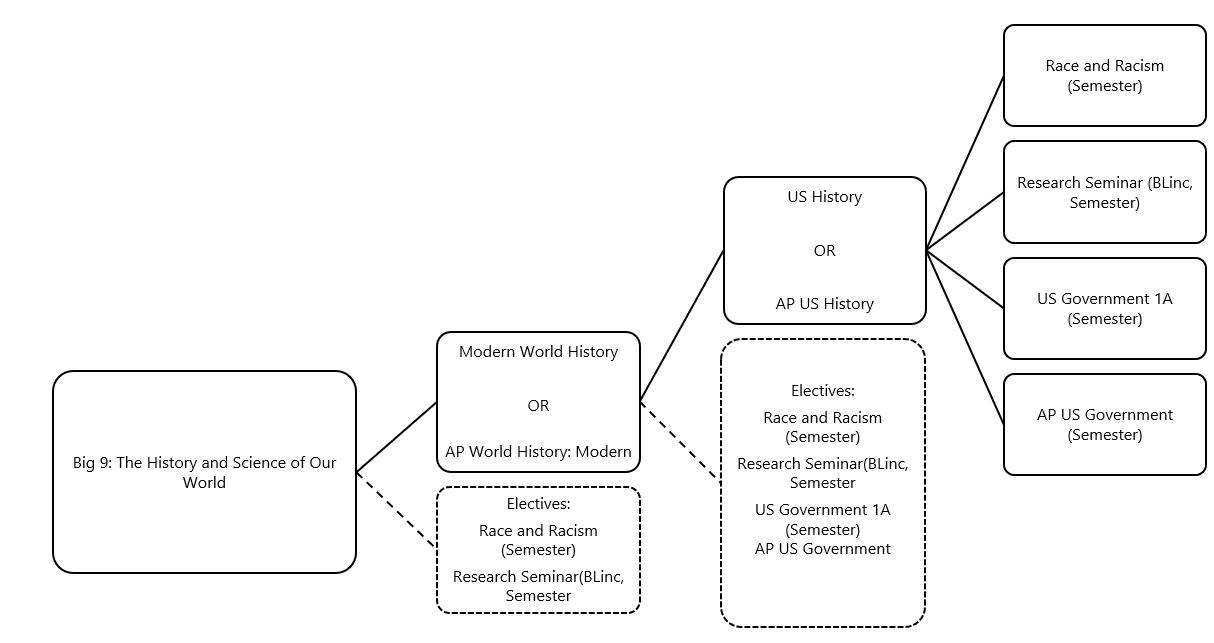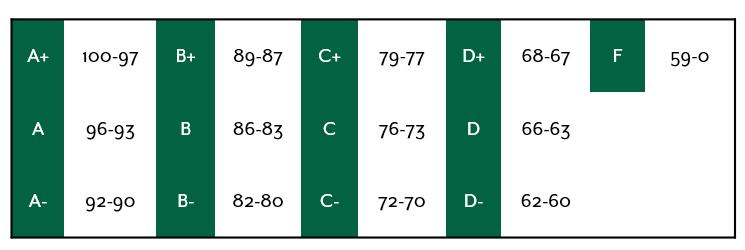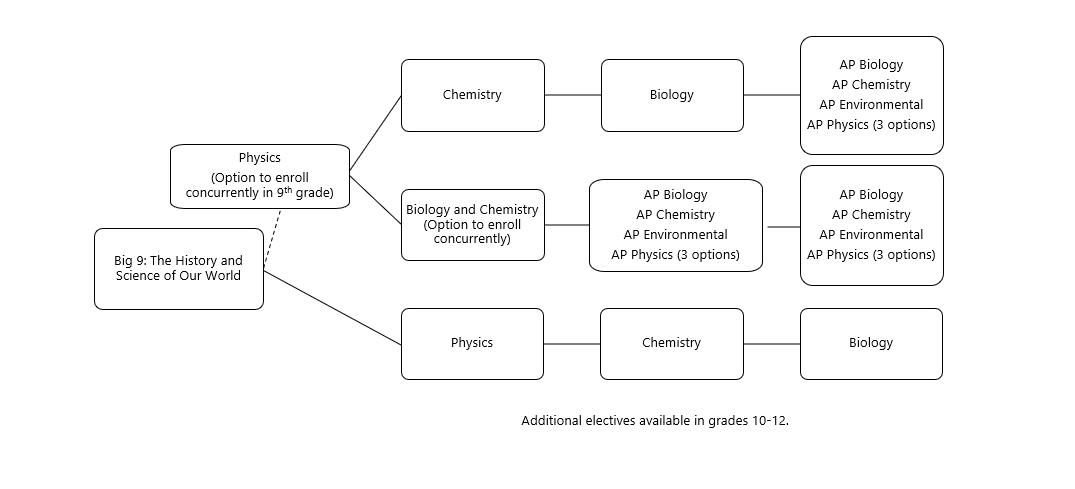
7 minute read
MATHEMATICS COMPUTER SCIENCE
Algebra 1 Geometry (can be taken in summer) Algebra II
PreCalculus AP Calculus AB or AP Calculus BC
Advertisement
AP Statistics
Number Theory (GOA)
Electives available after Algebra II:AP Statistics, Linear Algebra (GOA), Macroeconomics (GOA) etc
Mathematics
Course Sequence
Algebra 1
Algebra 1 covers the basic skills of algebra, including expressions, equations, and inequalities, as well as exponents, polynomials, and proportions. The focus is on three function families: linear, exponential, and quadratic. Students learn to graph linear equations, solve systems of linear equations, and use graphs, equations, and inequalities to solve problems. Multiplying and factoring polynomials lay the foundation for solving quadratic equations. Students learn to simplify, add, subtract, multiply, and divide radical expressions and solve radical equations. 9, 10
Geometry
Prerequisite: Algebra 1. Note: students may take Geometry at the same time as Algebra 2, or in the summer between Algebra 1 and Algebra 2 (see below course description through Global Online Academy). This course uses the context of geometric figures to teach logical reasoning. Similarity, congruence, special line and angle relationships, special segments, trigonometric ratios, coordinate geometry, constructions, plane figures, and 3D figures are analyzed. Five different kinds of proofs are developed throughout the course. Students will use geometry software to explore, design, and prove truths about geometric figures and relationships. 9, 10, 11
Geometry – Global Online Academy
Prerequisite: Algebra 1 Note: This course is only offered during Summer Term and cannot be taken in place of a yearlong math class. It is taken by students who wish to advance from Algebra 1 in one year to Algebra 2 the next year. This intensive summer course is designed to provide an accelerated path through the traditional high school curriculum. Focusing on Euclidian geometry, students will examine topics relating to parallel lines, similar and congruent triangles, quadrilaterals, polygons, and circles. Students can expect to analyze lengths, areas, and volumes of two- and three-dimensional figures, and will explore transformations and other manipulations. Particular attention will be paid to introductory trigonometry with right triangles and the study of circles (radians, sectors, arc length). In addition, the development of a mature, logical thought process will begin through a formal introduction to arguments, deductions, theorems, and proofs. Because this course will cover topics that are typically presented in a yearlong course, students should expect to dedicate 15-20 hours per week during the intensive 7-week summer session. 9, 10
Algebra 2
Prerequisite: Geometry Students in Algebra 2 build upon previously acquired mathematical concepts to explore a variety of topics, including first degree equations and inequalities, linear relations and functions, systems of equations and inequalities, polynomials and polynomial functions, and quadratic functions. They also learn the rudiments of probability and statistics and trigonometric functions. 9, 10, 11, 12
Pre-Calculus
Prerequisite: Algebra 2 Pre-Calculus is the final preparatory course for AP Calculus. Students learn to solve problems involving space, motion, and change. This includes the study of linear, polynomial, exponential, logarithmic, rational, and trigonometric functions. Students also practice and affirm their knowledge of algebra. 10, 11, 12
AP Calculus AB
Prerequisite: Pre-Calculus Note: Students wishing to take calculus should take either AP Calculus AB or AP Calculus BC, not both. For placement or credit purposes, colleges and universities typically treat AB as one semester of calculus, and BC as two semesters.
Calculus AB is an AP-certified, college-level equivalent of a first semester calculus course. Students learn the basics of differentiation, integration, and first order differential equations. They also practice applying these concepts to situations involving quantities that change over time, and situations that involve maximizing or minimizing a given quantity. The course is a full preparation for the AP Calculus AB exam. 11, 12
AP Calculus BC
Prerequisite: Pre-Calculus. Note: Students take either AP Calculus AB or AP Calculus BC, not both. For placement or credit purposes, colleges and universities typically treat AB as one semester of calculus, and BC as two semesters. Students planning to take Multivariable Calculus or AP Physics C: E&M should take AP Calculus BC. Calculus BC is an AP-certified, college-level equivalent of a first and second semester calculus course. Students start out learning all the material found in Calculus AB. The central additional concept in Calculus BC is the approximation of functions by infinite series. Series provide a powerful tool for visualizing and analyzing transcendental functions, differential equations, and phenomena in the sciences. Specialized techniques for the integration and analysis of functions are also examined. Students learn to use the techniques of calculus in non-rectangular coordinate systems. There is an emphasis on applications to physics and other sciences.
11, 12
AP Statistics
Prerequisite: Algebra 2 Statistics is an essential part of the mathematical toolbox for scientists and informed citizens. This course is about data, experiments, and inference. A good graph can tell a story. So how can you make sense of data, and present data in a useful way? Humans are fallible. How then can we collect data and perform experiments with as little bias as possible? Finally, the real world is messy. How can we use probability to quantify our uncertainty? And how can we make useful predictions and conclusions, despite this uncertainty? 10, 11, 12
Computer Science
Introduction to Computer Science (Semester)
In this introductory semester long course students will be exposed to the fundamentals of computer science no previous experience required. Students begin by studying how various types of information (numbers, text, images) can be represented digitally. From there the primary focus of the course shifts to learning how to write simple computer programs using a high-level programming language such as Python and/or JavaScript (the
language used is at the discretion of the instructor). Through several hands-on projects students will develop an understanding of the building blocks of algorithms - sequence, selection (if statements), and iteration (loops) as well as simple data abstractions such as arrays. If time permits students will also learn about key design principles of the Internet and how to be a good digital citizen. Although not a required prerequisite, this course provides a solid foundation for students interested in further study of computer science in a GOA or AP
course.
9, 10, 11, 12
AP Computer Science Principles
Prerequisite: Algebra 1 AP Computer Science Principles is a full-year, rigorous, entry-level course that introduces high school students to the foundations of modern computing. The course covers a broad range of foundational topics such as programming, algorithms, the Internet, big data, digital privacy and security, and the societal impacts of computing. The course enables students to develop the computational thinking vital for success across multiple disciplines.These skills include using computational tools to analyze and study data and working with large data sets to analyze, visualize, and draw conclusions from trends. The course is unique in its focus on fostering student creativity. Students are encouraged to apply creative processes when developing computational artifacts and to think creatively while using computer software and other technology to explore questions that interest them.They will also develop effective communication and collaboration skills, working individually and collaboratively to solve problems, and discussing and writing about the importance of these problems and the impacts to their community, society, and the world. To appeal to a broader audience, including those often underrepresented in computing, this course highlights the relevance of computer science by emphasizing the vital impact advances in computing have on people and society. By focusing the course beyond the study of machines and systems, students also have the opportunity to investigate the innovations in other fields that computing has made possible and examine the ethical implications of new computing technologies. 9, 10, 11, 12
AP Computer Science A
Prerequisites: Algebra 2, AP Computer Science Principles AP Computer Science A is equivalent to a first-semester, college-level course in computer science. The course introduces students to computer science with fundamental topics that include problem solving, design strategies and methodologies, organization of data (data structures), approaches to processing data (algorithms), analysis of potential solutions, and the ethical and social implications of computing. The course emphasizes both object-oriented and imperative problem solving and design using Java programming language. These techniques represent proven approaches for developing solutions that can scale up from small,
simple problems to large, complex problems. The AP Computer Science A course curriculum is compatible with many CS1 courses in colleges and universities. 10, 11, 12
Global Online Academy Math and Computer Science Offerings
Global Online Academy Math and Computer Science Electives: Visit https://globalonlineacademy.org/studentprogram/student-courses and select “Mathematics and Technology” to see approved course offerings through GOA.






